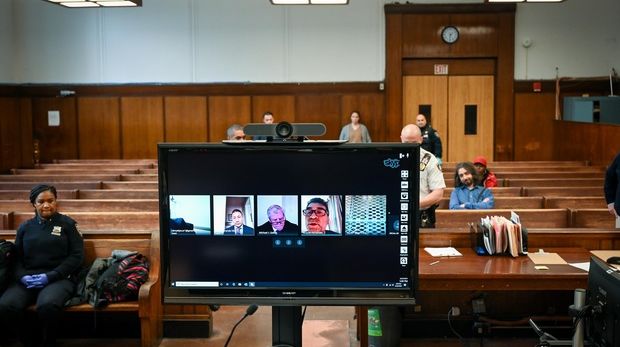Remote Advocacy
Welcome to the New Normal

The current pandemic effectively canceled or postponed almost all in-person hearings or oral arguments. The judiciary has been quick to embrace video conferences as an alternative. Texas state courts have quickly tested and adopted Zoom video conferencing as their default licensed platform.
Now participants will attend hearings more than likely from their own homes. Remote hearings come with pitfalls as well as advantages for both lawyers and clients; however, this is the new normal for hearings in Texas for the foreseeable future.
Here are some tips to help you and your clients navigate virtual court appearances:
· Place your computer’s camera at or slightly above eye level. If necessary, prop your computer on a short stack of books or a box. It will help you maintain better eye contact (and avoid the dreaded nostrils view).
· Talk to the camera, not the computer screen. If it helps, place a sticker or small post it next to your camera so you remember where you should be looking.
· Sit far enough away from the computer screen. Think of a bust statue, or how newscasters look on the air. Make sure your shoulder and upper arms show on the screen.
· Set the scene behind you. Busy or messy backgrounds can be distracting. Allow for some distance between you and the bookshelves or wall of artwork behind you so that they’re not in sharp focus. If you must, choose a position in front of a bare light-colored wall and push as far away as possible to avoid looking like a mug shot. Zoom offers virtual backgrounds in case you do not have access to a suitable space to serve as the backdrop for your hearing. If you use one of those backgrounds, be sure to sit as still as possible and make sure your camera is steady. Sudden movements can cause a glitch. Further instructions at the link below. https://support.zoom.us/hc/en-us/articles/210707503-Virtual-Background
· Adjust the lighting. You want more light on your face than behind you. Some of that will come from the computer screen. Adjust the placement of lamps and experiment with opening or closing curtains, shades, and blinds on windows - especially those behind you. Side lighting from lamps and windows usually will look better than overhead lighting.
· Dress appropriately. Attorneys should dress as you typically would for an in-person hearing. Attorneys should provide clients with the same guidance regarding appearance for a remote hearing as you would for an in-person hearing. Consider additional ways in which clothing can impact remote hearings. For instance, prints can be distracting in the video.
· A smaller room is better for audio. If you must work at your dining table, try to face away from the largest part of the room. High ceilings and lots of space could make your voice sound hollow. (Some work-from-home podcasters set up makeshift studios inside their closets, so their clothing baffles the sound, just like the foam on the walls of an audio booth).
· If in a mediation, or other non-hearing settings, take more frequent breaks than during an in-person presentation. Neither you nor the participants will be able to move as much as you usually would in a live hearing. Pause so the participants (and you) can shift in their chairs.
· Test everything and practice, practice, practice. Practice with whatever platform used in your county. Most counties seem to be using Zoom. There are multiple training videos online, review them, and take some time to become familiar with the settings and features. Make sure your clients or witnesses are also comfortable using the system.
· If possible, allow at least the first 10 minutes of your online session to ensure everyone’s technology works. You might want to have everyone’s email just in case of a technical issue so you can email documents or have a print out to display on the screen (this might not work at a hearing) rather than delaying your session to try to fix.
Belinda J. Martinez/Staff Attorney/Lone Star Legal Aid